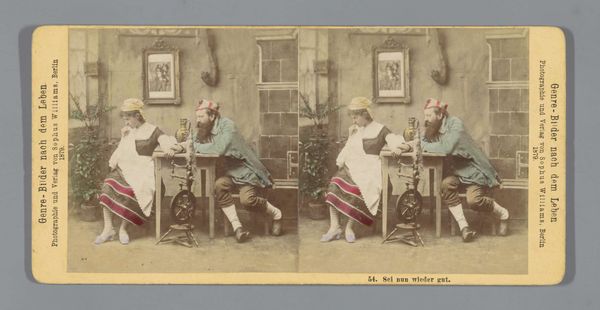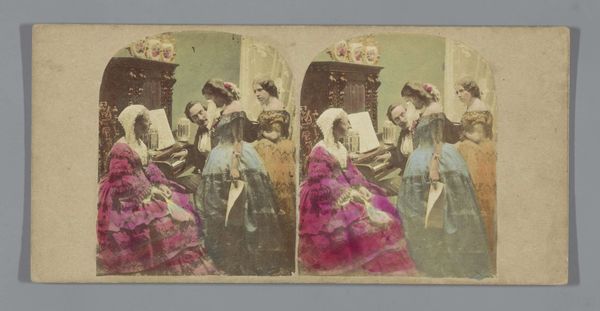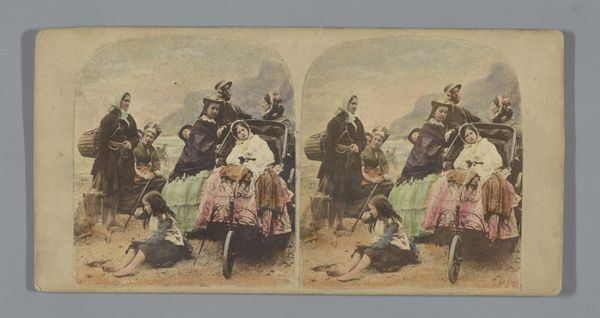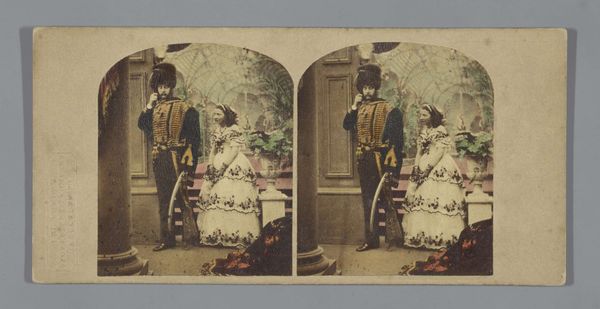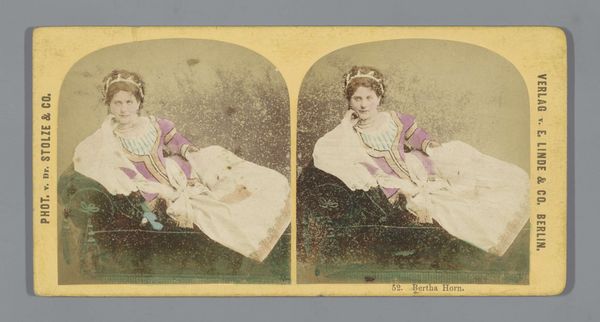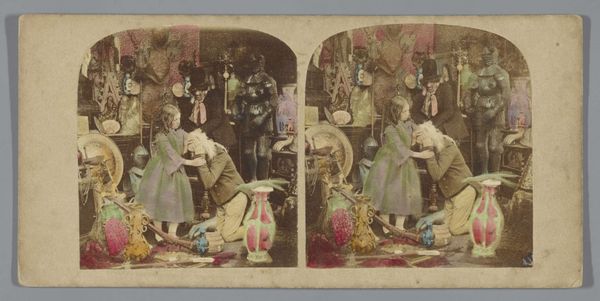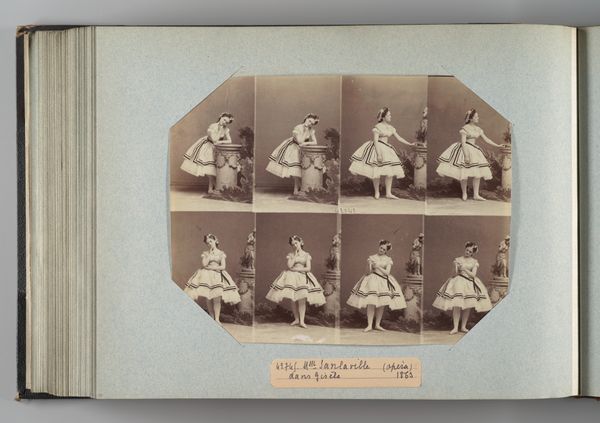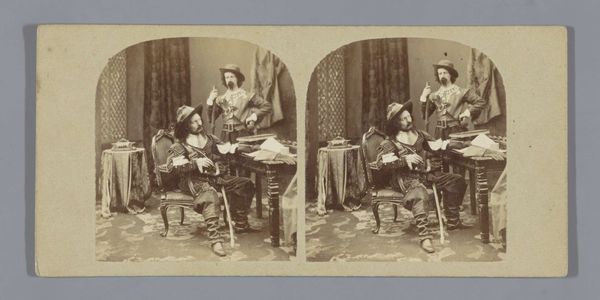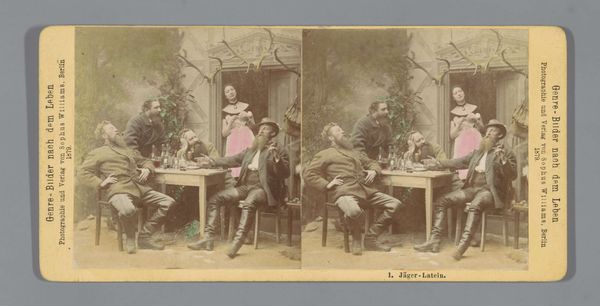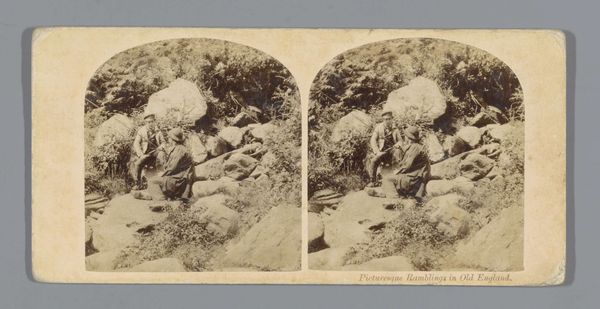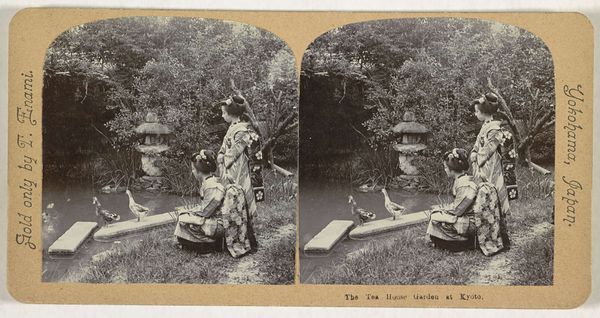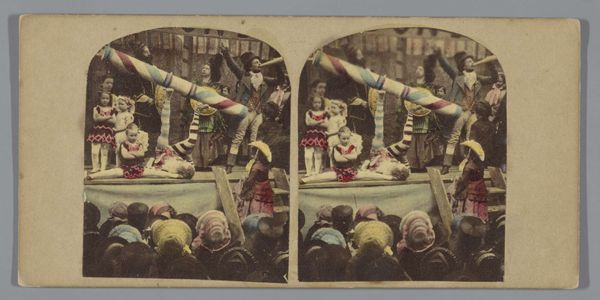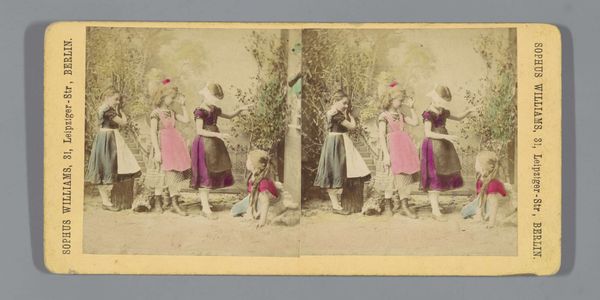
c-print, photography
#
portrait
#
c-print
#
photography
#
historical fashion
#
group-portraits
#
orientalism
#
genre-painting
#
history-painting
Dimensions: height 85 mm, width 176 mm
Copyright: Rijks Museum: Open Domain
Curator: Here we have Sophus Williams' "Groep mensen rond een fontein," or "Group of People Around a Fountain," taken around 1879. It's a c-print photograph that initially strikes me as quite staged. Editor: Staged is exactly the word. The lighting is so even, and the poses seem a little too…deliberate? I mean, look at the sleeping dog. There is some theatrical presence that makes me question the artist’s intent. Curator: Precisely! These photographs, known as "genre-pictures from life," were immensely popular at the time. But that popularity tells a story of its own. Consider how these carefully crafted scenes offered a romanticized version of everyday life that many craved. They reinforce prevailing notions of societal roles and aesthetics. Editor: Ah, so it's not about depicting reality, but about constructing an idealized image, maybe even an escapist fantasy? The Orientalist undertones are hard to ignore. Curator: You see the Orientalism there as well? These photographs and their visual storytelling often reflect and propagate colonial views of different cultures that may not match the current cultural norms. Editor: Exactly. Though seemingly innocent, these visual strategies worked to solidify an image of the “Other”. These works highlight identity in a problematic context that uses race and gender. The clothing the models are wearing are clear depictions of what the "Other" is percieved as by a colonist perspective. Curator: The scale of photography must also be kept in mind. Consider who had access to artmaking in the 1870s and how photographs and portraitures played out among them. With this lens in mind, our reading can transcend simply admiring this artifact on its surface to exploring the broader societal issues it signifies. Editor: Absolutely. Seeing "Groep mensen rond een fontein" for its historical implications reveals much more about the past and also encourages a nuanced conversation about representation and legacy in contemporary times.
Comments
No comments
Be the first to comment and join the conversation on the ultimate creative platform.
